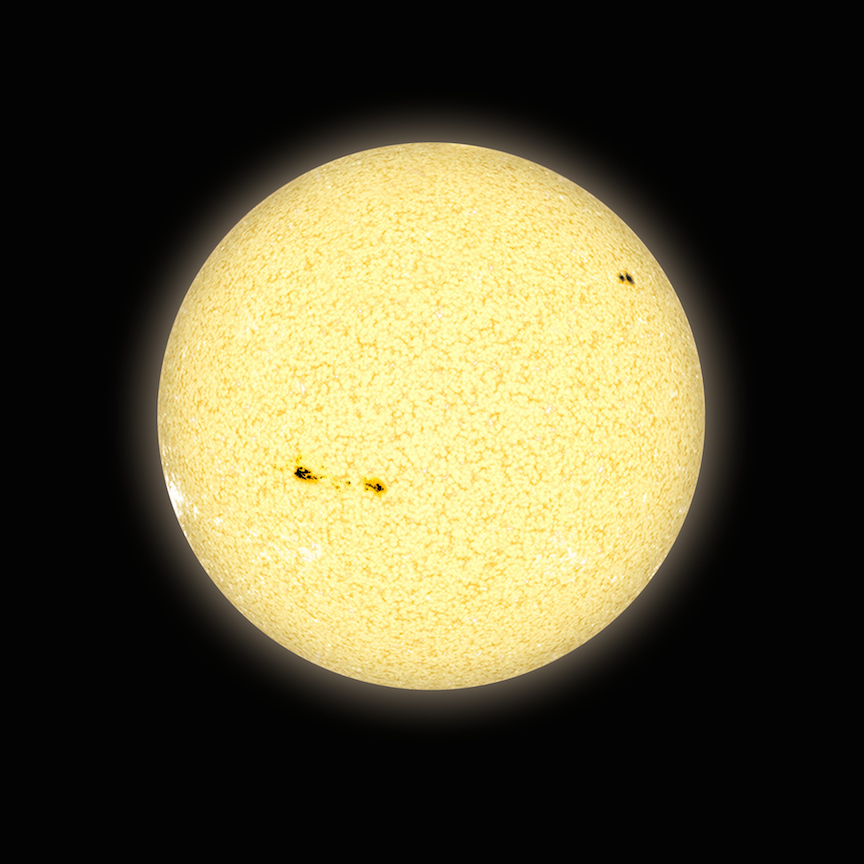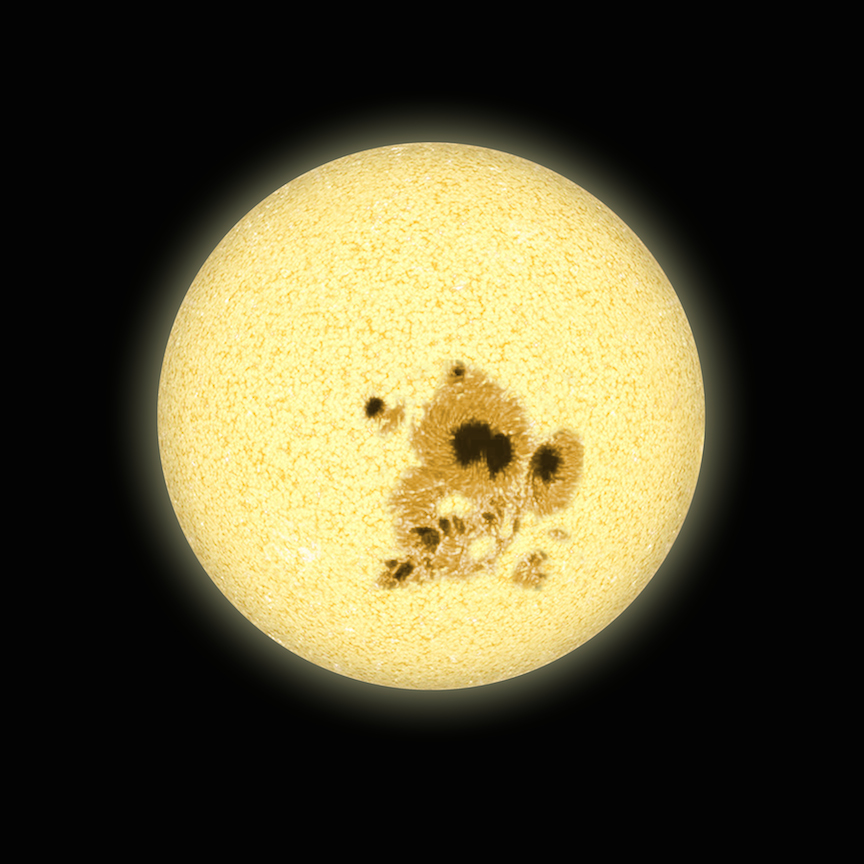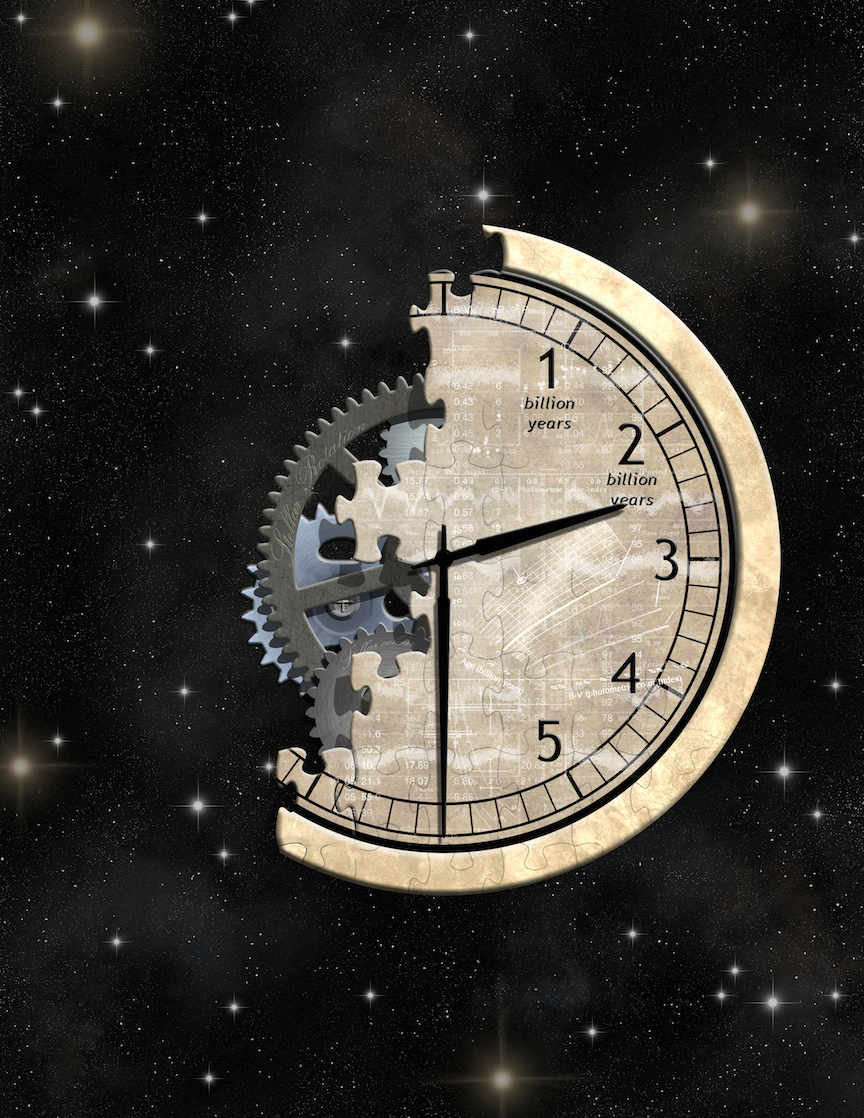Image List
-

It's harder to tell the age of an older star because they rotate more slowly and have smaller starspots.
David A. Aguilar (CfA) -

It's easier to tell the age of a young star because they rotate more quickly and have larger starspots.
David A. Aguilar (CfA) -

This artist's impression of a "cosmic clock" illustrates how astronomers have used stellar rotation to measure the ages of stars in a 2.5-billion-year-old star cluster. Their results, the latest success of gyrochronology, mark the first extension of such observations to stars with ages beyond 1 billion years, and toward the 4.6-billion-year age of the Sun. Being able to tell the ages of stars is the basis for understanding how astronomical phenomena involving stars and their companions unfold over time.
Michael Bachofner